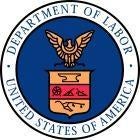Like you, the first time I see the current Employment Situation report is the same day that the Bureau of Labor Statistics releases the data. Last Friday morning, as I sat down for my monthly briefing, I was excited to learn that the construction industry added 48,000 jobs, the highest monthly increase since March 2007. This is not only good news for the hardworking Americans who will benefit from this expansion, but a good sign that our economy is supporting middle-class job growth.
During the recession of 2007 to 2009, the American economy lost 8.7 million jobs − the largest drop in employment since the Great Depression. In one month alone, March 2009, employment dropped by more than 800,000 jobs. The impact of the recession was felt throughout the economy, with the manufacturing, construction, and professional and business services sectors experiencing the largest employment declines. As the figure below reveals, these sectors lost approximately 2,265,000, 1,954,000 and 1,488,000 jobs, respectively. But in percent terms, the hardest-hit sector was construction, at -26.1 percent. Construction is typically one of the most vulnerable sectors during a recession, but the industry’s decline was particularly pronounced due to the housing bubble burst.
Employment Change by Selected Supersector, Total nonfarm peak to trough and trough to current. Source: Bureau of Labor Statistics, Current Employment Statistics Survey.
Since the low point for employment, in February 2010, the economy has created 6.4 million jobs, reflecting a steady − though incomplete − recovery. The housing market is finally starting to rebound, and the construction industry has grown by 169,000 jobs in the last 9 months. And importantly, as this industry grows, there is a trickle-down effect to other industries that sell goods and services used in construction. For example, concrete and lumber suppliers benefit whenever new housing developments are built.
Additionally, employment in professional and business services, as well as leisure and hospitality, has now surpassed the pre-recession level. Education and health services, which saw continued job growth even during the downturn, also have seen an increase in growth during the recovery.
The manufacturing sector was losing jobs well before the recession, and though we have not recovered all of the jobs lost, we are experiencing the largest expansion in manufacturing jobs (currently three years strong) since the mid-1980s. Growth in mining and logging also has now made up for those industries’ losses during the downturn, driven largely by the boom in domestic energy production.
Despite the good news across varying sectors, one area that continues to be a drag on the recovery is the public sector. Since the end of the recession, government job losses have totaled more than 700,000, and more than three-fourths of these losses have been at the local government level. That number represents teachers, fire fighters, police officers and other local public servants. This is the only economic recovery in the last 50 years to see a loss in government jobs. As the acting Secretary of Labor has said before, “it doesn’t make sense to apply the brakes while you’re trying to accelerate the economy.”
Friday’s report demonstrates that the American economy is slowly but steadily climbing out of one of the deepest holes in our nation’s history. Many American businesses are hiring again, but we still have work to do. Now is the time to make smart investments in our future.
Jennifer Hunt is Chief Economist to acting U.S. Secretary of Labor Seth Harris.


 />i
/>i


